 An official website of the United States government. Here's how you know.
An official website of the United States government. Here's how you know.
 An official website of the United States government. Here's how you know.
An official website of the United States government. Here's how you know.  An official website of the United States government. Here's how you know.
An official website of the United States government. Here's how you know. Unit:
1st Infantry Division, 18th Infantry Regiment, 3rd Battalion, Company L
Date of Birth:
October 15, 2011
Hometown:
Cedar Rapids, Iowa
Date of Death:
June 6, 1944
Place of Death:
Omaha Beach, Normandy, France
Awards:
Silver Star, Purple Heart
Cemetery:
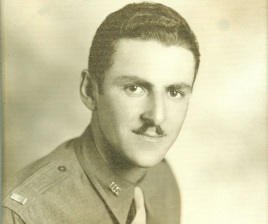
Frank Nusz Fitch, Jr. was born October 15, 1911, and raised in Cedar Rapids, Iowa, by his parents, Frank and Sarah Fitch. As a young man, Fitch worked as a gas station attendant. After graduating from Washington High School, he attended Coe College, a small private liberal arts college in Cedar Rapids, where he studied economics and sociology and participated in the Reserve Officer Training Corps (ROTC).
Graduating from Coe College in 1933, he earned as a commission as a as a first lieutenant in the United States Army Reserve. Fitch’s family moved to Los Angeles while he attended university. He followed them out west after completing his studies. He resided in Anaheim, working as the manager of a local service station and serving as an active member of his local Lions Club.
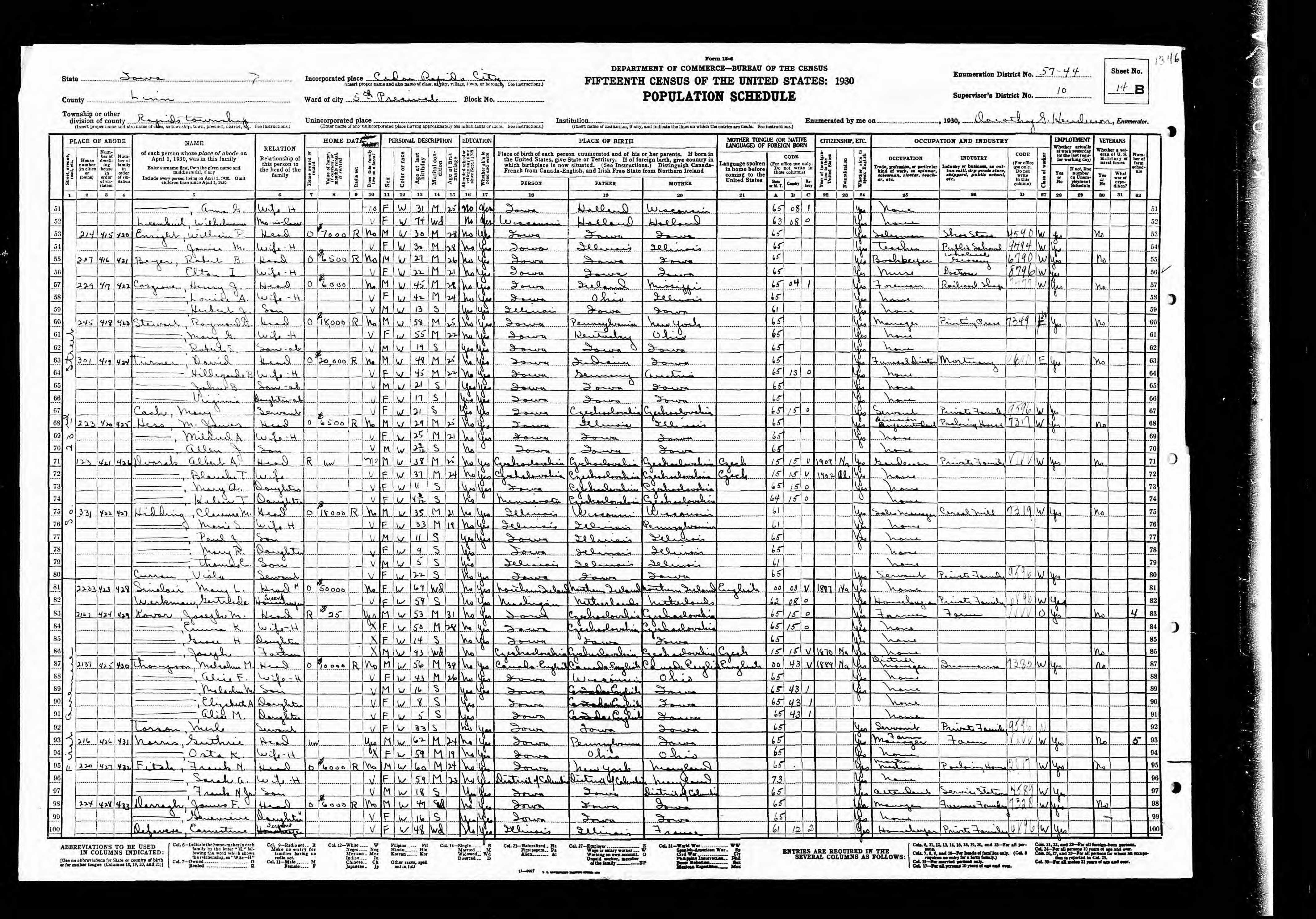
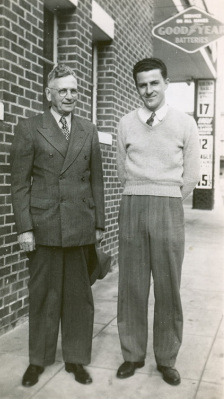
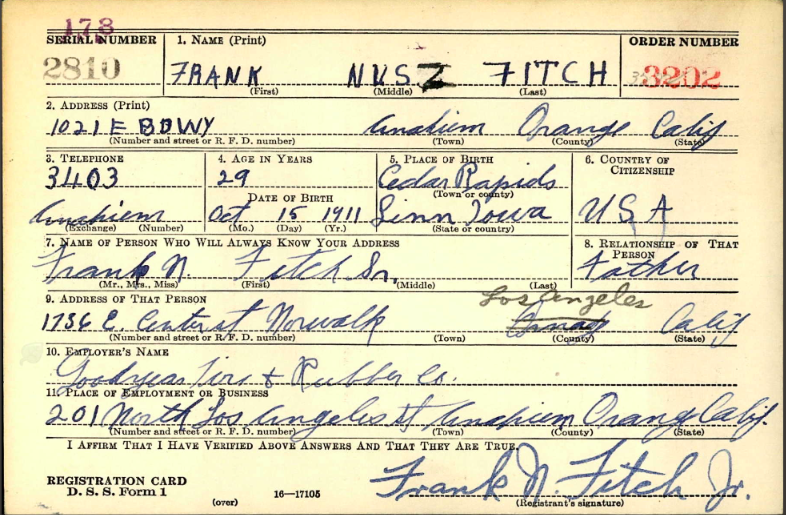
During World War II, Captain Fitch’s home state of California developed as a military production hub. Major coastal cities, such as Los Angeles and San Francisco, served as ports for the U.S. Navy. Developing areas, like San Diego, grew into sizable military towns due to an ever-increasing presence of the U.S. Navy. Because of the threat of Japanese naval attacks, California became one of the most important areas of the country in terms of military industrialization.
In 1942, he was sent to Tunisia, North Africa (Mediterranean Theatre of Operation) as executive officer of Company L of the 3rd Battalion of the 18th Infantry Regiment, 1st Infantry Division. When his commanding officer, Captain Fogg, was killed in action during the Tunisia campaign, Fitch temporarily took command. One month later, Fitch earned a promotion to the rank of Captain and became the permanent commanding officer of Company L.
Fitch led a daring night landing in the Sicilian campaign in Italy. He successfully helped liberate Italy from Benito Mussolini’s fascist regime. After the island was secure, Fitch traveled to England to prepare for the imminent invasion of France.
On D-Day, Fitch’s company planned to land at Easy Red landing zone on Omaha Beach in Normandy, France. Due to the heavy German resistance on the beach, Fitch’s landing was delayed several hours. When Fitch and his men were finally underway, their landing craft struck two mines and was destroyed. Fitch and his men were luckily only about 100 yards from shore at this point and were able to make it to shore safely. Several of Fitch’s men suffered injuries from the mine explosion.
When Company L reached the beach, the battle was not going well for the American troops already on Omaha Beach. The German artillery and machine guns had them pinned down.
Fitch quickly took action. He urged his men to press forward, and attempted to push his way off the beach through an alternate path. The beach had been thickly mined and the only paths that had been cleared were already clogged with soldiers. While leading the charge through an un-cleared minefield, Fitch stepped on a mine and was badly wounded. Moments later, he was struck with shrapnel from an artillery shell. Fitch received medical attention, but succumbed to his wounds a few hours later on the beach.
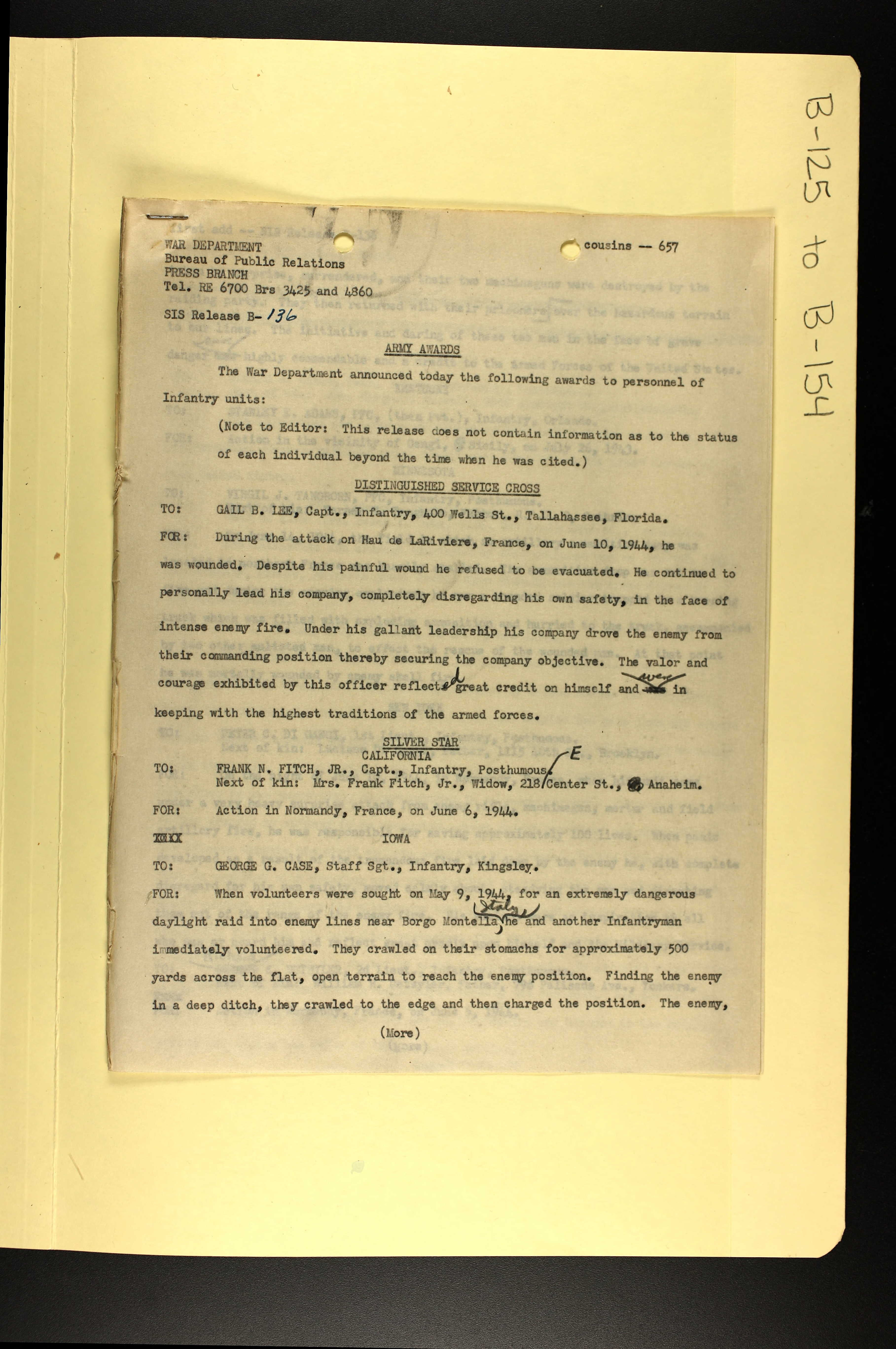
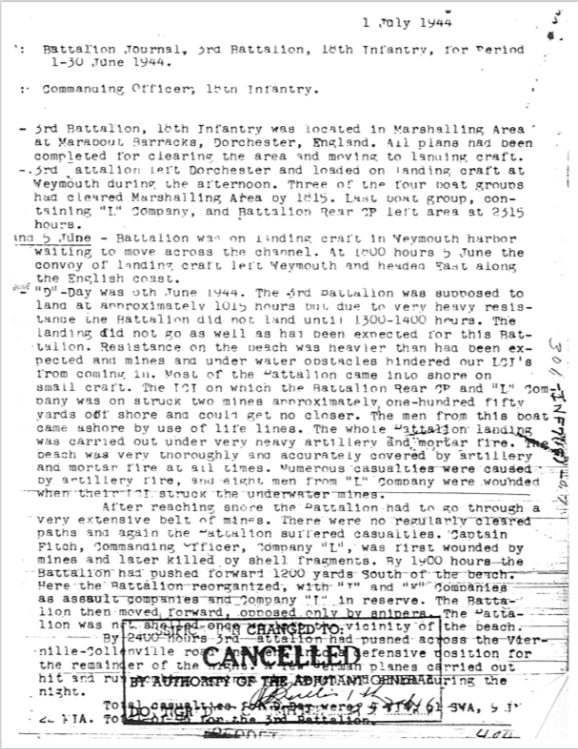
Captain Fitch’s actions made it possible for Company L to push through the alternate path that Fitch had carved and lead the charge off of Omaha Beach by the end of the day. For his gallantry on D-Day, Fitch posthumously received the Silver Star. He was survived by his wife, LuEllen, who chose to have Captain Fitch buried in Normandy, France. Fitch was an excellent soldier, and by all accounts, a good person. He gave his life for the noblest of causes and is remembered by all as a hero.
The story of Frank N. Fitch’s death should give us all pause. No one, no matter how skilled a soldier or how good a person, is immune from the wrath of war. Fitch knew this all too well. He knew it when he shipped off to North Africa, and he knew it when he daringly charged through a minefield on Omaha Beach. This is precisely what makes him a hero. Captain Fitch knowingly sacrificed himself to preserve the well-being of his men and the sovereignty of our democracy. On one hand, it is this kind of sacrifice that ultimately leads to triumph in war. One the other, it is this kind of loss that makes us question the necessity and the validity of war. Frank N. Fitch, Jr. was an educated young man with a promising future when he died in the midst of battle.

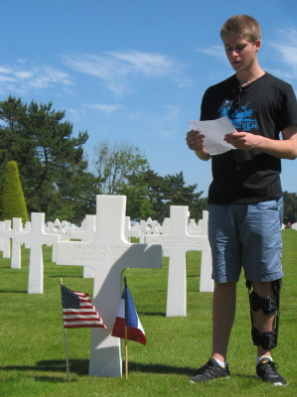
18th Infantry Regiment Unit History, June 1-30 June 1944. Record Group 407 (Box 5938). National Archives at College Park. College Park, MD.
Fitch Family Photographs. Courtesy of the Fitch Family.
Frank N. Fitch, Jr, Individual Deceased Personnel File, Department of the Army.
“Frank N. Fitch, Jr.” Headstone and Interment Records for U.S. Military Cemeteries on Foreign Soil. ancestry.com.
“Frank N. Fitch, Jr.” War Department Press Releases and Related Records, 1942-1945. ancestry.com.
“Frank Nusz Fitch.” WWII Draft Cards Young Men, 1940-1947. ancestry.com.
Iowa. Linn County. 1920 U.S. federal census. ancestry.com.
Iowa. Linn County. 1930 U.S. federal census. ancestry.com.
“Killed in action in France on D-day.” The Gazette [Cedar Rapids, Iowa], July 10, 1944. Newspapers.com (50546069).
Letter, George W. Pinson, Jr. to Mrs. Luellen Fitch. August 28, 1944. Courtesy of the Fitch Family.
Official Bulletin, Los Angeles War Council, May 31, 1943. Record Group 171 (Box 50). National Archives & Records Administration – Pacific Region. Laguna Nigel, CA.
Rogers, Edward K. Doughboy Chaplain. New York: Meador Publishing Company, 1946.
Safranek, Michael. Personal Interview. May 25, 2011.
War Price and Rationing, Region 8 Newsletter. Record Group 188 (Box 20). National Archives & Records Administration – Pacific Region. Laguna Nigel, CA.
West Coast Gas Situation Critical, Pacific Coast Oil Company. Record Group 253 (Box 479). National Archives & Records Administration – Pacific Region. Laguna Nigel, CA.
“California and the Second World War II.” California State Military Museum. Accessed May 10, 2020. www.militarymuseum.org/HistoryWWII.html.
Utah Beach to Cherbourg. Washington, D.C.: Center of Military History, 1990. history.army.mil/html/books/100/100-12/CMH_Pub_100-12.pdf.
The American Battle Monuments Commission operates and maintains 26 cemeteries and 31 federal memorials, monuments and commemorative plaques in 17 countries throughout the world, including the United States.
Since March 4, 1923, the ABMC’s sacred mission remains to honor the service, achievements, and sacrifice of more than 200,000 U.S. service members buried and memorialized at our sites.